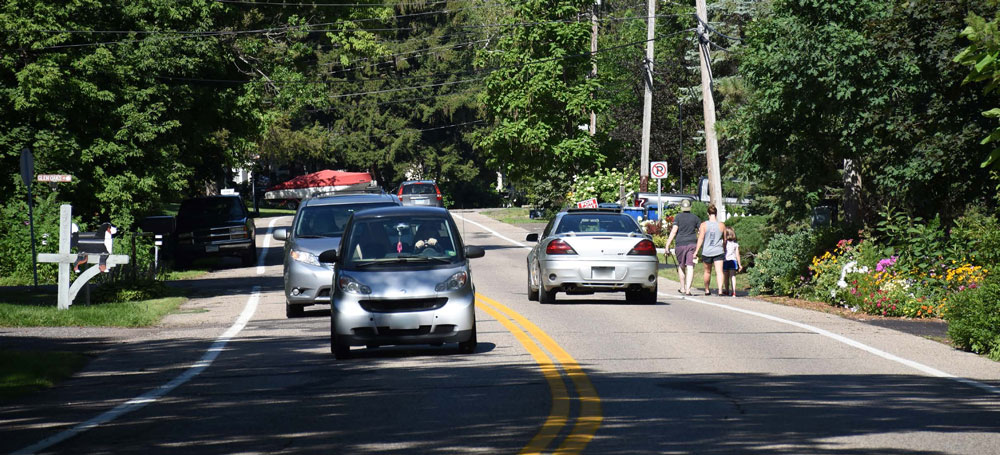Common Traffic Questions

How are speed limits set, and can they be lowered?
In Minnesota, the Minnesota Department of Transportation (MnDOT) is the only agency that can change speed limits on county roads. However, under state law (Minnesota Statute 160.263, subdivision 4), local governments can lower speed limits to no less than 25 mph on roads with bike lanes.
Using this law, the Ramsey County Board of Commissioners gave the County Manager the authority to adjust speed limits on county roads with bike lanes. In 2023, based on recommendations from the County Engineer, speed limits were reduced on 34 miles of roads with bike lanes. Most of these roads saw speed limits drop by 5 mph, while some were lowered by 10 mph.
Speed limits are based on how fast most drivers naturally travel. One key factor in setting speed limits is the 85th percentile speed—this is the speed at which 85% of vehicles are traveling at or below. In urban areas like Ramsey County, other factors are also considered, such as road conditions, public transit stops, lane width, pedestrian and bike traffic, crash history, and median (50th percentile) speeds.
Where can a crosswalk be installed and can flashing lights be added?
Ramsey County follows federal guidelines to determine where crosswalks can be installed. Some key factors include:
- Sidewalks, trails, or ramps on both sides of the road.
- Road width and number of lanes.
- Presence of on-street parking.
- Average daily traffic volume.
- Posted and actual vehicle speeds.
- Visibility and stopping distance for drivers.
- Distance to the nearest crosswalk or traffic signal.
- Number of pedestrians using the crossing, especially near schools, parks, and businesses.
Flashing lights, known as Rectangular Rapid Flashing Beacons (RRFBs), can make crossings safer by increasing visibility. However, they are only installed if a location meets specific criteria, including pedestrian traffic levels and vehicle speeds. An engineering study is required to determine if an RRFB is appropriate for a particular crossing.
Where can stop signs be installed and do they slow traffic?
Stop signs help control traffic and assign the right of way at intersections. Ramsey County follows the Minnesota Manual on Uniform Traffic Control Devices (MUTCD) to determine when a stop sign is needed. Factors include:
- The number of vehicles and pedestrians using the intersection.
- Crash history at the location.
- An engineering study to assess if a stop sign is justified.
However, stop signs are not used to slow traffic. Studies show they are not an effective speed control measure, and overusing them can lead to driver non-compliance, making intersections less safe.
Where can a traffic signal be installed?
Traffic signals, like stop signs, are installed based on MUTCD guidelines. They are usually placed at intersections where stop signs are no longer sufficient to manage traffic. A signal is only installed if traffic volume, pedestrian activity, and road conditions meet certain requirements.
Ramsey County does not install traffic signals unless they are justified by an engineering study. Unnecessary signals can increase congestion and lead to unsafe driving behaviors like red-light running.